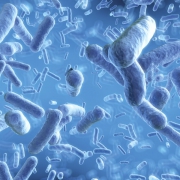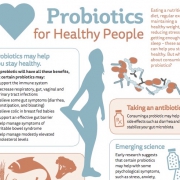A roundup of the ISAPP consensus definitions: probiotics, prebiotics, synbiotics, postbiotics and fermented foods
By Dr. Mary Ellen Sanders, PhD, ISAPP Executive Science Officer
ISAPP has long recognized the importance of precise definitions of the ‘biotic’ family of terms. As a scientific organization working to advance global knowledge about probiotics, prebiotics, synbiotics, postbiotics and fermented foods, we believe carrying out rigorous scientific studies—and comparing one result to another—is more difficult if we do not start with a clear definition of what we are studying.
Over the past 8 years, ISAPP has endeavored to bring clarity to these definitions for scientists and other stakeholders. ISAPP board members have met with other top experts representing multiple perspectives and specialties in the field to develop precise, useful and appropriate definitions of the terms probiotics, prebiotics, synbiotics, postbiotics and fermented foods. The definitions of these first four terms have all entailed the requirement that the substance be shown to confer a health benefit in the target host. Fermented foods have multitudes of sensorial, nutritional and technological benefits, which drive their utility. A health benefit is not required.
The problem with health benefits
The definitions provide significant advantages for the scientific community in terms of clarity but complexity arises when the same definitions are accepted by regulatory agencies. This requirement for a health benefit as part of the probiotic definition has been rigorously implemented in the European Union. Currently, with the exception of a few member states, the term probiotic is prohibited. The logic is that since a health benefit is inherent to the term probiotic and since there are no approved health claims for probiotics in the EU*, the term ‘probiotic’ is seen to be acting as a proxy for a health claim. This has frustrated probiotic product companies who believe they have met the scientific criteria for probiotics, yet cannot identify their product as a probiotic in the marketplace because they have not received endorsement of their claims by the EU. This is not an issue resulting from an unclear definition, since probiotics surely should provide a health benefit, but rather from a lack of agreement as to what level of evidence is sufficient to substantiate a health benefit.
ISAPP remains committed to the importance of requiring a health benefit for the ‘biotic’ family of terms (outlined in the table below). It’s clear that all of these definitions are meaningless unless the requirement that they confer a health benefit is considered as essential by all stakeholders. One could reasonably discuss whether the required levels of evidence for foods and supplements are too high in some regulatory jurisdictions, but the value of these substances collapses in the absence of a health benefit.
Summary of ISAPP consensus definitions
With the publication of the most recent ISAPP consensus paper, this one on postbiotics, I offer a summary below of the five consensus definitions published by ISAPP. Each definition is part of a comprehensive paper resulting from focused discussions among experts in the field and published in Nature Reviews Gastroenterology and Hepatology (NRGH). These papers are among the top most viewed of all time on the NRGH website and are increasingly cited by scientists and regulators.
Table. Summary of ISAPP Consensus Definitions of the ‘Biotics’ Family of Substances. Probiotics, prebiotics, synbiotics and postbiotics have in common the requirement for a health benefit. They may apply to any target host, any regulatory category and must be safe for their intended use. Fermented foods fall only under the foods category and no health benefit is required.
| Definition | Key features of the definition | Reference | |
| Probiotics | Live microorganisms that, when administered in adequate amounts, confer a health benefit on the host | Grammatical correction of the 2001 FAO/WHO definition.
No mechanism is stipulated by the definition.
|
Hill et al. 2014 |
| Prebiotics | A substrate that is selectively utilized by host microorganisms conferring a health benefit | Prebiotics are distinct from fiber. Beneficial impact on resident microbiota and demonstration of health benefit required in same study. | Gibson et al. 2017 |
| Synbiotics | A mixture comprising live microorganisms and substrate(s) selectively utilized by host microorganisms that confers a health benefit on the host | Two types of synbiotics defined: complementary and synergistic. Complementary synbiotics comprise probiotic(s) plus prebiotic(s), meeting requirements for criteria for each. Synergistic synbiotics comprise substrate(s) selectively utilized by co-administered live microbe(s), but independently, the components do not have to meet criteria for prebiotic or probiotic. | Swanson et al. 2020 |
| Postbiotics | Preparation of inanimate microorganisms and/or their components that confers a health benefit on the host | Postbiotics are prepared from live microbes that undergo inactivation and the cells or cellular structures must be retained. Filtrates or isolated components from the growth of live microbes are not postbiotics. A probiotic that is killed is not automatically a postbiotic; the preparation must be shown to confer a health benefit, as well as meet all other criteria for a postbiotic. | Salminen et al. 2021 |
| Fermented Foods | Foods made through desired microbial growth and enzymatic conversions of food components | Fermented foods are not the same as probiotics. They are not required to have live microbes characterized to the strain level nor have evidence of a health benefit. Types of fermented foods are many and are specific to geographic regions. Compared to the raw foods they are made from, they may have improved taste, digestibility, safety, and nutritional value. | Marco et al. 2021 |
*Actually, there is one approved health claim in the EU for a probiotic: Scientific Opinion on the substantiation of health claims related to live yoghurt cultures and improved lactose digestion (ID 1143, 2976) pursuant to Article 13(1) of Regulation (EC) No 1924/2006
Further reading: Defining emerging ‘biotics’















